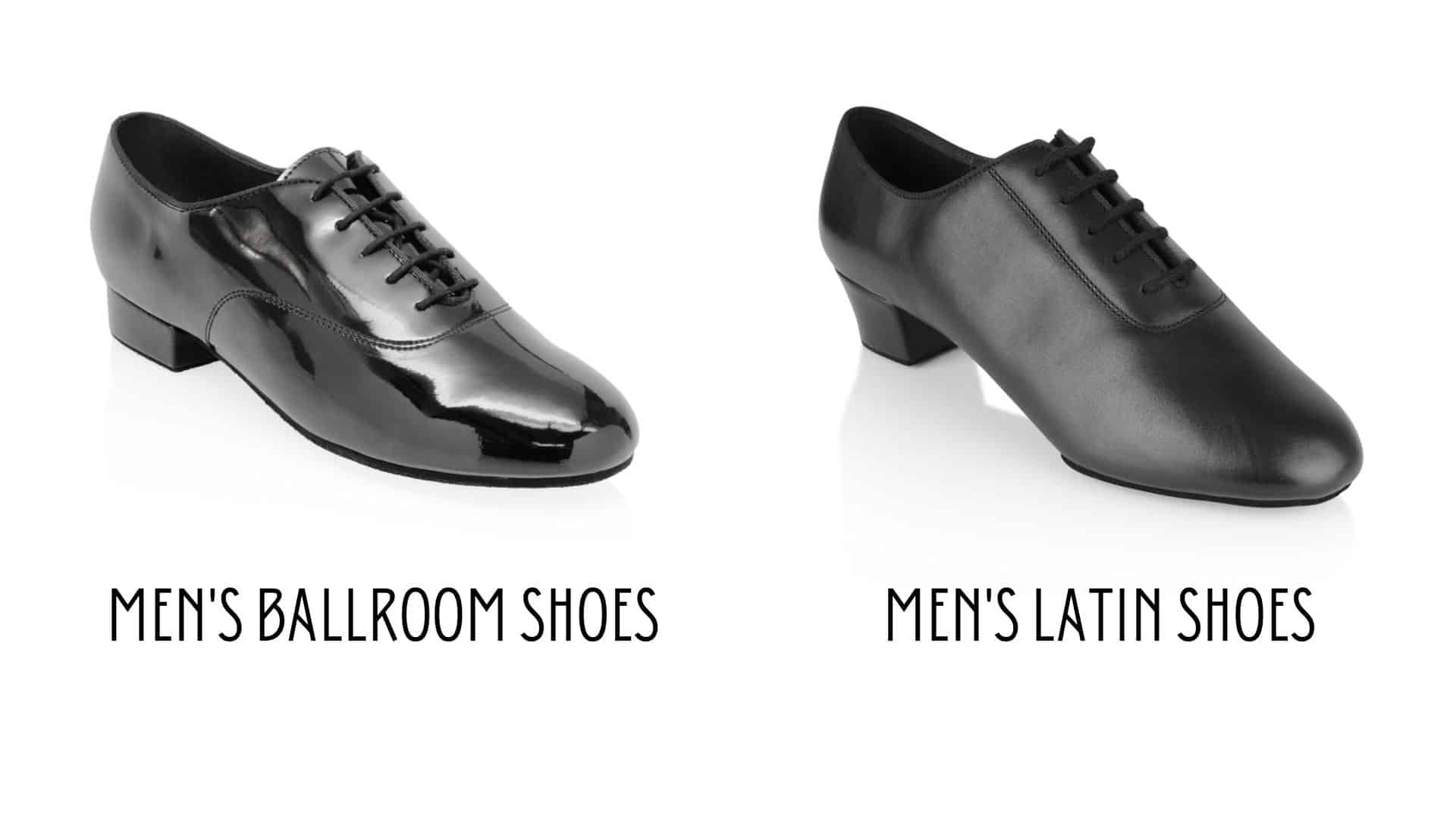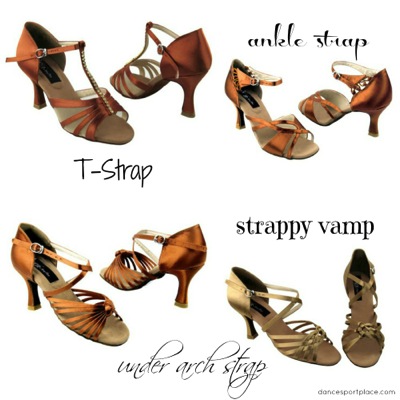Ballroom dance shoes have a closed-toe design for stability, while Latin dance shoes feature an open-toe style for flexibility. The heels on Latin shoes are also typically higher to accentuate movements.
Ballroom and Latin dance shoes cater to different dance styles and requirements. Ballroom shoes usually have a closed-toe design, offering better support and stability. These shoes are perfect for smooth dances like the waltz and foxtrot. Latin dance shoes, on the other hand, feature an open-toe design, providing more flexibility and freedom of movement.
The higher heels in Latin shoes help dancers achieve the distinct, sharp movements required for dances like the cha-cha and salsa. Selecting the right type of dance shoe can significantly enhance your performance and comfort on the dance floor.
Introduction To Dance Shoes
Dance shoes are essential for dancers. They provide the needed support and flexibility. The right shoes can enhance a dancer's performance. They also help prevent injuries. Different dances require specific shoes. In this post, we will explore ballroom and Latin dance shoes.
Purpose And Function
Ballroom and Latin dance shoes serve different purposes. Ballroom shoes are designed for smooth dances. They have a closed toe and low heel. This helps with balance and control.
Latin dance shoes are made for rhythmic dances. They have an open toe and higher heel. This design allows for more foot movement. The higher heel helps with quick steps and spins.
|
Dance Type |
Shoe Design |
Heel Type |
|---|---|---|
|
Ballroom |
Closed Toe |
Low Heel |
|
Latin |
Open Toe |
Higher Heel |
Importance In Dance
The right dance shoes are very important. They affect a dancer's performance and safety. Wearing the correct shoes can improve technique. They also prevent foot and ankle injuries.
Ballroom shoes provide stability. This helps dancers glide smoothly on the floor. Latin shoes offer flexibility. This allows for intricate footwork and fast movements.
Both types of shoes have special soles. These soles provide the right amount of grip and slide. This balance is key for safe and effective dancing.
-
Ballroom Shoes: Stability, smooth gliding, low heel
-
Latin Shoes: Flexibility, intricate footwork, higher heel

Credit: arthurmurrayhornsby.com.au
Ballroom Dance Shoes
Ballroom dance shoes are essential for any ballroom dancer. They provide the support and flexibility needed for smooth and elegant movements. These shoes are specifically designed to enhance your performance on the dance floor.
Design Features
Ballroom dance shoes have unique design features. They often have a closed toe to protect your feet. The heel is usually lower than Latin dance shoes, giving better balance. The soles are made of suede, offering just the right amount of grip and slide.
Here are some key design features of ballroom dance shoes:
-
Closed Toe: Protects and supports your feet.
-
Lower Heel: Provides better balance and stability.
-
Suede Soles: Offers optimal grip and slide.
Materials Used
Ballroom dance shoes use high-quality materials. The upper part is often made from leather or satin. These materials offer durability and comfort. The inner lining is usually made of breathable fabric, keeping your feet cool.
Here is a breakdown of materials used in ballroom dance shoes:
|
Part of Shoe |
Material |
|---|---|
|
Upper |
Leather or Satin |
|
Sole |
Suede |
|
Inner Lining |
Breathable Fabric |
Latin Dance Shoes
Latin Dance Shoes are essential for dancers who want to excel in Latin dance styles. These shoes are designed to provide flexibility, comfort, and support. They allow dancers to perform intricate footwork and quick movements with ease.
Distinctive Characteristics
Latin dance shoes have some distinctive features that set them apart from other dance shoes. These features include:
-
Open Toes: Most Latin dance shoes have open toes to allow for better movement and flexibility.
-
Strappy Design: They often feature multiple straps to secure the foot firmly.
-
Higher Heel: The heels are usually higher, between 2 to 3 inches, to enhance posture and balance.
-
Flexible Soles: The soles are made from flexible materials to allow for smooth and quick movements.
-
Lightweight: These shoes are lightweight, ensuring dancers can move freely without feeling weighed down.
Common Materials
The materials used in Latin dance shoes are chosen for their durability and comfort. Some of the most common materials include:
|
Material |
Description |
|---|---|
|
Leather |
Leather is durable and molds to the foot over time, providing a custom fit. |
|
Satin |
Satin offers a smooth, elegant look and is often used for competition shoes. |
|
Suede |
Suede soles provide excellent grip on the dance floor, enhancing performance. |
|
Mesh |
Mesh materials add breathability, keeping the feet cool and comfortable. |
Choosing the right materials is crucial for comfort and performance in Latin dance.

Heel Differences
Understanding the heel differences between ballroom and Latin dance shoes is crucial for dancers. The heel design plays a significant role in performance and comfort. Here, we will explore the height variations and their impact on performance.
Height Variations
Ballroom dance shoes usually have lower heels compared to Latin dance shoes. Typical ballroom shoe heels range from 0.5 to 2.5 inches. Latin dance shoes have heels that range from 1.5 to 3.5 inches. The higher heels in Latin shoes provide better weight distribution. This helps dancers achieve intricate footwork and faster movements.
Impact On Performance
The heel height directly affects a dancer's posture and balance. Lower heels in ballroom shoes offer stability. This is ideal for smooth dances like waltz and foxtrot. Higher heels in Latin shoes enhance the dancer's ability to perform sharp and quick movements. This is essential for dances like salsa and cha-cha.
|
Heel Height |
Dance Type |
Benefits |
|---|---|---|
|
0.5 to 2.5 inches |
Ballroom |
Better stability and balance |
|
1.5 to 3.5 inches |
Latin |
Enhanced weight distribution and faster movements |
Ballroom shoes with lower heels help maintain an upright posture. This is key for elegant and smooth movements. Latin shoes with higher heels shift the dancer's weight forward. This facilitates quick and precise footwork.
Sole And Flexibility
Ballroom and Latin dance shoes are essential for dancers. Each type offers unique features. The sole and flexibility of these shoes affect your performance. Let's explore the differences.
Types Of Soles
Dance shoes come with different soles. The sole material can affect grip and movement. Here are the main types:
-
Suede Soles: Common in both Ballroom and Latin shoes. They provide a good balance of grip and slide.
-
Leather Soles: Usually found in Ballroom shoes. They offer more slide, suitable for smooth dances.
-
Rubber Soles: Rare in professional dance shoes. They provide too much grip, not ideal for dance floors.
Flexibility Considerations
Flexibility is crucial for dancers. It allows for better foot movement and comfort. Here’s how Ballroom and Latin shoes differ:
|
Feature |
Ballroom Dance Shoes |
Latin Dance Shoes |
|---|---|---|
|
Sole Flexibility |
Stiffer for support in gliding movements. |
Softer for quick, intricate footwork. |
|
Arch Support |
More arch support for long dances. |
Less arch support for greater flexibility. |

Credit: dancesportplace.com
Choosing The Right Shoes
Choosing the right shoes is crucial for both ballroom and Latin dance. The correct footwear can enhance your performance and ensure comfort. This section will guide you through the factors to consider and provide expert recommendations.
Factors To Consider
Several factors come into play when selecting dance shoes. Here are the main points:
-
Material: Look for shoes made of leather or suede. These materials provide flexibility and comfort.
-
Heel Height: Ballroom shoes generally have lower heels. Latin dance shoes often feature higher heels.
-
Fit: Your shoes should fit snugly. Avoid shoes that are too tight or too loose.
-
Sole Type: Choose suede soles for optimal grip and slide. Avoid rubber or plastic soles.
-
Support: Arch support is essential for long dance sessions. Look for shoes with good padding.
Expert Recommendations
Experts offer valuable insights into selecting the best dance shoes. Here are some top tips:
-
Ballroom Dance Shoes: Choose shoes with a closed toe for added protection. Opt for a heel height of 1 to 2 inches.
-
Latin Dance Shoes: Go for open-toe designs to allow more flexibility. A heel height of 2 to 3 inches is ideal.
-
Comfort: Always prioritize comfort. Try on multiple pairs to find the best fit.
-
Quality: Invest in high-quality shoes. They last longer and provide better support.
Frequently Asked Questions
What Is The Difference Between Ballroom And Latin Shoes?
Ballroom shoes have a closed toe and lower heel for stability. Latin shoes feature an open toe and higher heel for flexibility.
Can You Use Ballroom Shoes For Salsa?
Yes, you can use ballroom shoes for salsa. They provide good support and flexibility. However, salsa-specific shoes offer better grip and comfort for salsa moves.
Is Ballroom The Same As Latin Dancing?
Ballroom and Latin dancing are different. Ballroom includes dances like Waltz and Foxtrot. Latin dancing features styles like Salsa and Cha-Cha. Both have unique steps and rhythms.
What Makes A Ballroom Dance Shoe?
A ballroom dance shoe has a suede sole for better grip and flexibility. It features a cushioned insole for comfort. The shoe is lightweight and provides ankle support. It typically has a snug fit to ensure stability during dances.
What Are Ballroom Dance Shoes?
Ballroom dance shoes have a suede sole for better grip and flexibility. They often have a supportive arch.
Conclusion
Choosing the right shoes enhances your dance experience. Ballroom shoes provide stability, while Latin shoes offer flexibility. Understand your needs to make the best choice. Happy dancing!
